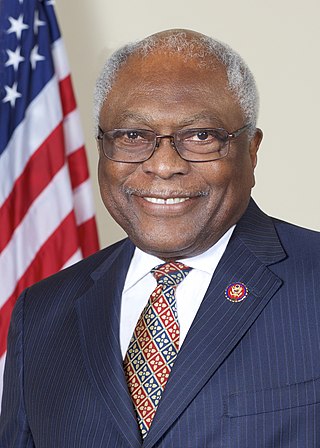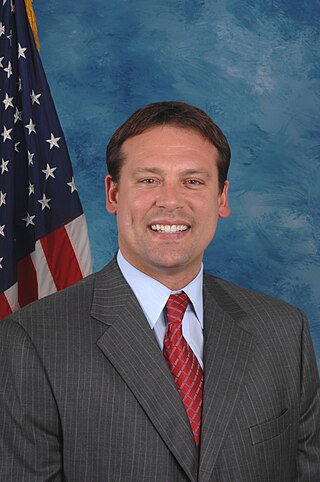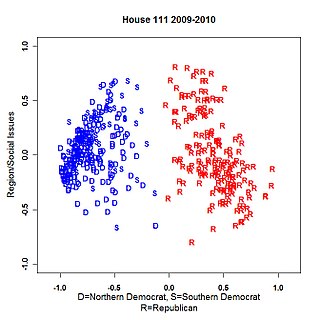
The speaker of the United States House of Representatives, commonly known as the speaker of the House or House Speaker, is the presiding officer of the United States House of Representatives. The office was established in 1789 by Article I, Section II, of the U.S. Constitution. By custom and House rules, the speaker is the political and parliamentary leader of the House and is simultaneously its presiding officer, de facto leader of the body's majority party, and the institution's administrative head. Speakers also perform various other administrative and procedural functions. Given these several roles and responsibilities, the speaker usually does not personally preside over debates—that duty is instead delegated to members of the House from the majority party—nor regularly participate in floor debates.

The positions of majority leader and minority leader are held by two United States senators and people of the party leadership of the United States Senate. They serve as a chief spokespersons for their respective political parties holding the majority and the minority in the United States Senate. They are each elected as majority leader and minority leader by the senators of their party caucuses: the Senate Democratic Caucus and the Senate Republican Conference.
A whip is an official of a political party whose task is to ensure party discipline in a legislature.

The 107th United States Congress was a meeting of the legislative branch of the United States federal government, composed of the United States Senate and the United States House of Representatives. It met in Washington, D.C., from January 3, 2001, to January 3, 2003, during the final weeks of the Clinton presidency and the first two years of the George W. Bush presidency. The apportionment of seats in this House of Representatives was based on the 1990 United States census.

Steny Hamilton Hoyer is an American politician and retired attorney who has served as the U.S. representative for Maryland's 5th congressional district since 1981. He also served as House Majority Leader from 2007 to 2011 and again from 2019 to 2023. Hoyer first attained office through a special election on May 19, 1981. As of 2023, he is in his 22nd House term. His district includes a large swath of rural and suburban territory southeast of Washington, D.C. Hoyer is the dean of the Maryland congressional delegation and the most senior Democrat in the House.

David Edward Bonior is an American politician from the U.S. state of Michigan. First elected to the U.S. House of Representatives in 1976, Bonior served as Democratic whip in the House from 1991 to 2002, during which time Democrats were in both the majority (1991–1995) and minority (1995–2002), making Bonior the third and second highest-ranking Democrat in the House, respectively.

James Enos Clyburn is an American politician serving as the U.S. representative for South Carolina's 6th congressional district. First elected in 1992, Clyburn represents a congressional district that includes most of the majority-black precincts in and around Columbia and Charleston, as well as most of the majority-black areas outside Beaufort and nearly all of South Carolina's share of the Black Belt. Since Joe Cunningham's departure in 2021, Clyburn has been the only Democrat in South Carolina's congressional delegation.

Jonas Martin Frost III is an American politician, who was the Democratic representative to the U.S. House of Representatives for Texas's 24th congressional district from 1979 to 2005.

The 72nd United States Congress was a meeting of the legislative branch of the United States federal government, consisting of the United States Senate and the United States House of Representatives. It met in Washington, D.C. from March 4, 1931, to March 4, 1933, during the last two years of Herbert Hoover's presidency. The apportionment of seats in this House of Representatives was based on the 1910 United States census. The Senate had a Republican majority. The House started with a very slim Republican majority, but by the time it first met in December 1931, the Democrats had gained a majority through special elections.

The 1994 United States House of Representatives elections were held on November 8, 1994, to elect U.S. Representatives to serve in the 104th United States Congress. They occurred in the middle of President Bill Clinton's first term. In what was known as the Republican Revolution, a 54-seat swing in membership from the Democratic Party to the Republican Party resulted in the latter gaining a majority of seats in the House of Representatives for the first time since 1952. It was also the largest seat gain for the party since 1946, and the largest for either party since 1948, and characterized a political realignment in American politics.

The Kansas Republican Party is the state affiliate political party in Kansas of the United States Republican Party. The Kansas Republican Party was organized in May 1859.

The 74th United States Congress was a meeting of the legislative branch of the United States federal government, composed of the United States Senate and the United States House of Representatives. It met in Washington, D.C., from January 3, 1935, to January 3, 1937, during the third and fourth years of Franklin D. Roosevelt's presidency. The apportionment of seats in the House of Representatives was based on the 1930 United States census.

Joseph Heath Shuler is an American former politician and professional football quarterback who served as the U.S. representative for North Carolina's 11th congressional district from 2007 to 2013. The district covers the Blue Ridge Mountains in Western North Carolina. A member of the Democratic Party, he played in the National Football League (NFL) for five seasons prior to his political career. Shuler played college football at the University of Tennessee, where he was named SEC Player of the Year, and was selected by the Washington Redskins third overall in the 1994 NFL draft. Unable to match his collegiate success, he was traded from the Redskins after three seasons and spent his final two with the New Orleans Saints.

The House Democratic Caucus is a congressional caucus composed of all Democratic representatives in the United States House of Representatives, voting and non-voting, and is responsible for nominating and electing the Democratic Party leadership in the chamber. In its roles as a party conference, the caucus writes and enforces rules of conduct and discipline for its members, approves committee assignments, and serves as the primary forum for development of party policy and legislative priorities. It hosts weekly meetings for these purposes and to communicate the party's message to members.

The South Dakota Democratic Party is the affiliate of the Democratic Party in the U.S. state of South Dakota. The party currently has very weak electoral power in the state, controlling none of South Dakota's statewide or federal elected offices.

The United States House of Representatives is the lower chamber of the United States Congress, with the Senate being the upper chamber. Together, they comprise the national bicameral legislature of the United States. The House is charged with the passage of federal legislation, known as bills; those that are also passed by the Senate are sent to the president for signature or veto. The House's exclusive powers include initiating all revenue bills, impeaching federal officers, and electing the president if no candidate receives a majority of votes in the Electoral College.

The 1994 United States elections were held on November 8, 1994. The elections occurred in the middle of Democratic President Bill Clinton's first term in office, and elected the members of 104th United States Congress. The elections have been described as the "Republican Revolution" because the Republican Party captured unified control of Congress for the first time since 1952. Republicans picked up eight seats in the Senate and won a net of 54 seats in the House of Representatives. Republicans also picked up a net of ten governorships and took control of many state legislative chambers. This is the first midterm election since 1946 in which the Republicans ended unified Democratic control of Congress in a midterm election under a Democratic president.

The United States Senate is the upper chamber of the United States Congress. The United States Senate and the lower chamber of Congress, the United States House of Representatives, comprise the federal bicameral legislature of the United States. Together, the Senate and the House have the authority under Article One of the U.S. Constitution to pass or defeat federal legislation. The Senate has exclusive power to confirm U.S. presidential appointments to high offices, approve or reject treaties, and try cases of impeachment brought by the House. The Senate and the House provide a check and balance on the powers of the executive and judicial branches of government.

NOMINATE is a multidimensional scaling application developed by US political scientists Keith T. Poole and Howard Rosenthal in the early 1980s to analyze preferential and choice data, such as legislative roll-call voting behavior. In its most well-known application, members of the US Congress are placed on a two-dimensional map, with politicians who are ideologically similar being close together. One of these two dimensions corresponds to the familiar left–right political spectrum.

Party leaders of the United States House of Representatives, also known as floor leaders, are congresspeople who coordinate legislative initiatives and serve as the chief spokespersons for their parties on the House floor. These leaders are elected every two years in secret balloting of their party caucuses or conferences: the House Democratic Caucus and the House Republican Conference. Depending on which party is in power, one party leader serves as majority leader and the other as minority leader.


















